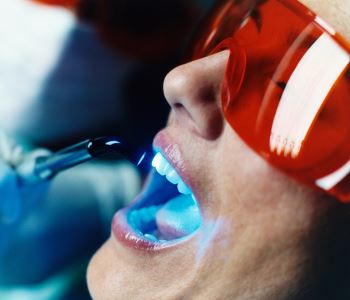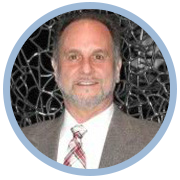
15
Jun
Lakewood patients benefit from the usage of laser applications in advanced dentistry

The history of laser usage in medical applications can be traced back to the beginning of the 20th century. Scientists and physicists recognized that light energy is a type of electromagnetic radiation. In 1900, physicist Max Planck published a theory about how light is absorbed and radiated, which was considered a major milestone in physics. In 1918, he won a Nobel Prize in Physics for his work.
Inspired by the work that Planck had performed, famous physicist Albert Einstein identified a process known as stimulated emission. Electrons, which can absorb and emit light spontaneously, could also be manipulated through stimulation to emit a controlled wavelength of light energy. Over the following 40 years, scientists tested the light emissions, proving Einstein’s theory to be correct and leading to today’s laser technology.
The first dental procedure using laser technology was performed in 1960 on a tooth extraction. The first medical application of laser technology was used in 1961 by Dr. Charles Campbell, an ophthalmologist at Columbia-Presbyterian Medical Center in Manhattan, to treat a tumor in a patient’s retina successfully.
Laser technology and research are responsible for many commercial, medical and personal technologies today, from NASA data gathering to bar code scanners and compact and audio discs, for example. Standing for Light Amplification by Stimulated Emission of Radiation, the word “laser” is an acronym recognized universally.
Laser dentistry did not become commercially available until the late 80s. Advanced dental clinicians, such as Dr. Scott Stewart at South Lakewood Dental, recognize today that lasers provide optimal clinical outcomes and precision when dealing with tissue management and hard or soft tissue procedures.
Our professional dental team is proud to offer the highest levels of advanced technology. Our variety of lasers allows Dr. Stewart to eliminate the dreaded dental drill and the associated discomfort. We can also perform minimally invasive, more comfortable and highly accurate procedures including treatment for gum disease, cosmetic gum line enhancements, routine dental treatments and early detection and treatment for decay.
For more information about the full range of progressive technologies and treatments available at South Lakewood Dental, serving patients and families from Lakewood, Wheat Ridge, and nearby communities, contact us today at (855) 233-0023.
 Connect with Dr. Scott Stewart on Twitter
Connect with Dr. Scott Stewart on Twitter
Dr. Scott Stewart - South Lakewood Dental
Dr. Scott Stewart is a practitioner of dentistry for over 25 years and has acquired much expertise over the years. Along with his talent, Dr. Stewart appreciates the multitude of contributions made to the field of dentistry via novel and progressive technology.Whilst being passionate about his service to the community, Dr. Stewart is a revolutionary in his approach to tackling dental health care issues. He is a firm believer in the harmonious balance of the body as opposed to treating symptoms. He emphasizes on the holistic practice of wellbeing and addressing underlying issues to make the “whole person” healthier.



